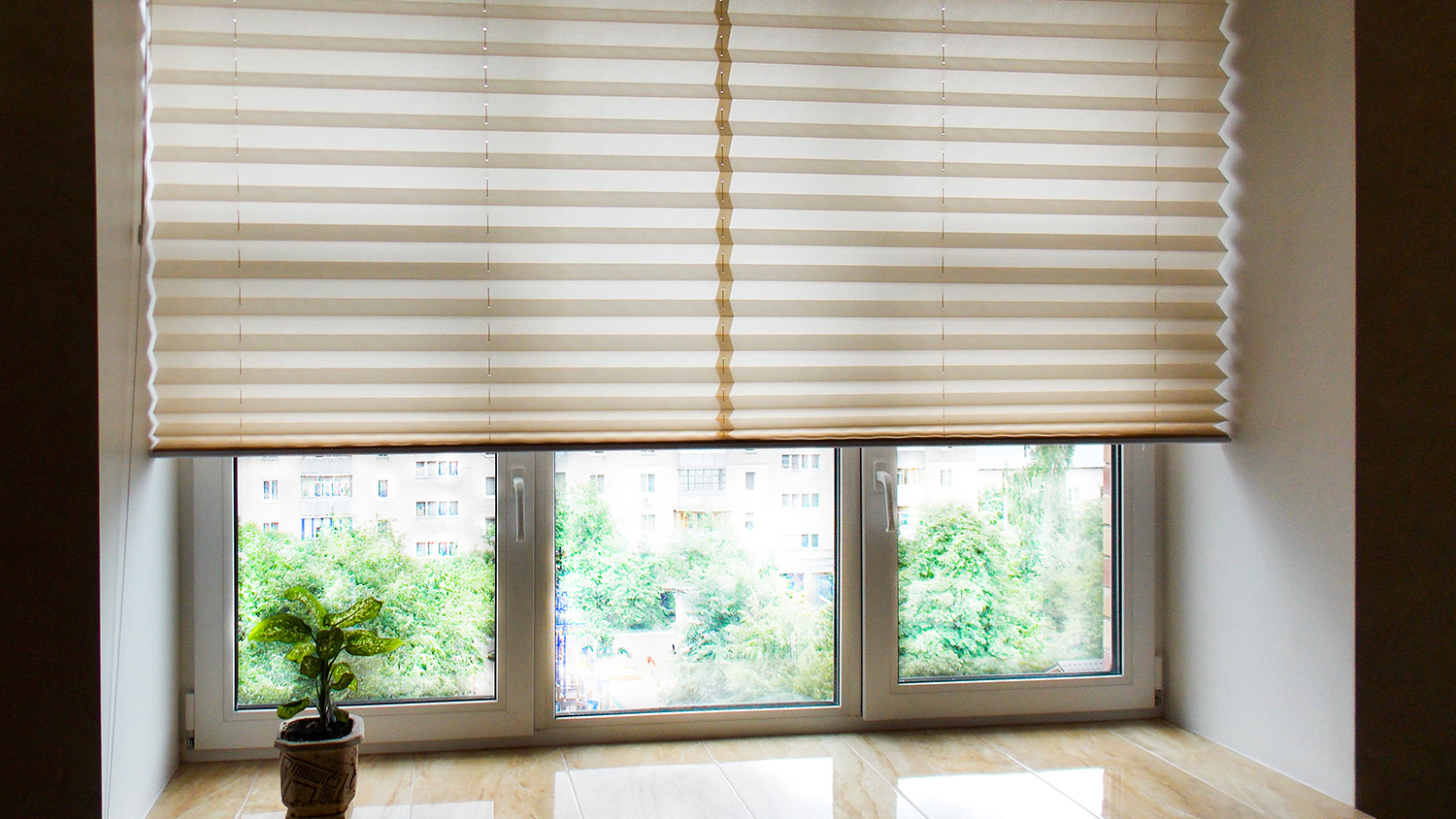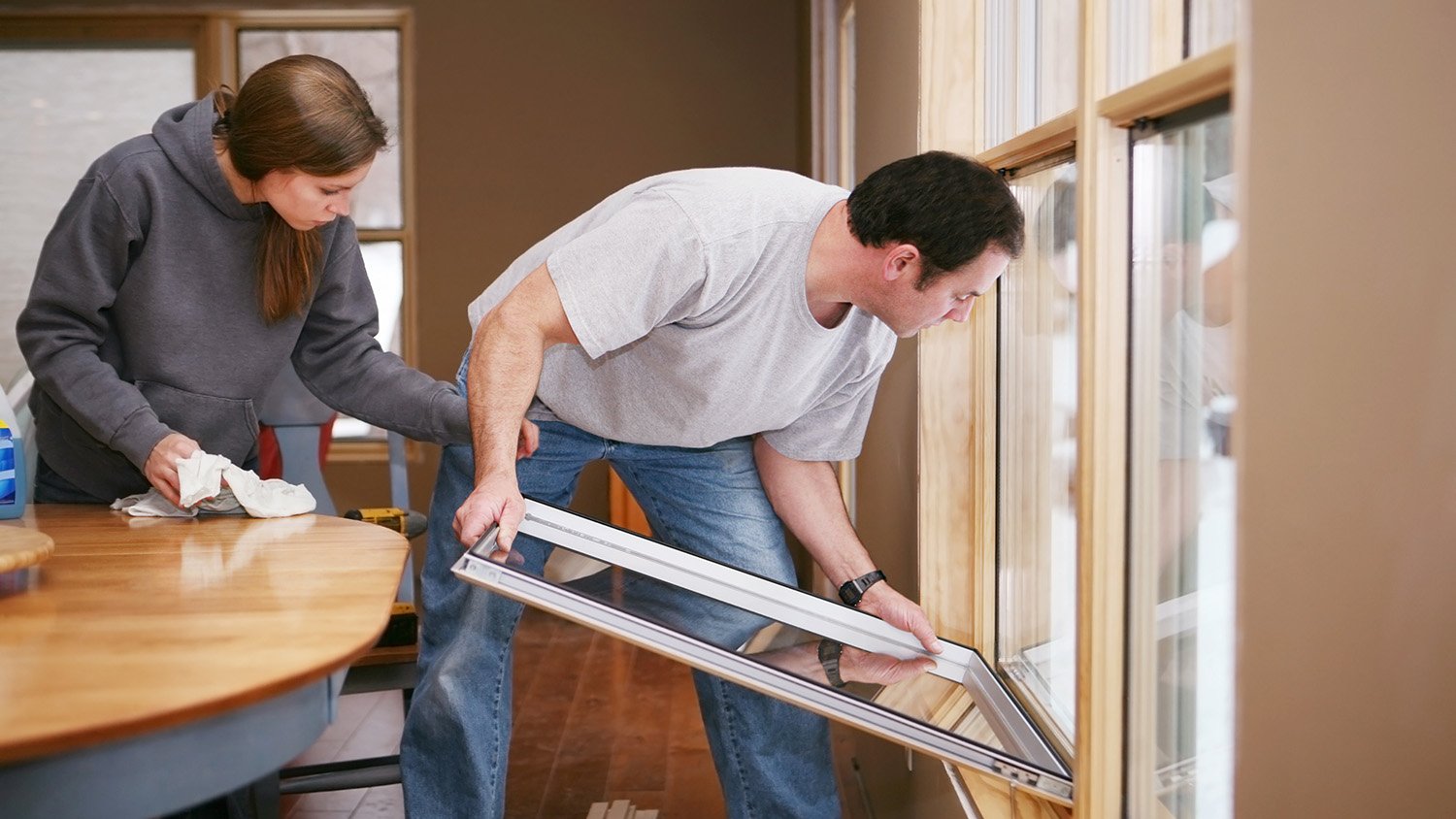
Bigger windows mean more natural light in your space and better views of the outdoors. Learn about the cost to enlarge windows and what affects your total.
Not all windows coverings need to be complicated


Plastic is the least expensive window treatment.
Other window films block UV and heat transfer far better.
Specialized shades are a great alternative and easy to install.
If you have the money, installing triple-pane windows is the best option.
Putting plastic on windows is a popular method designed to make your home more energy efficient. Although many find them tedious to install, window coverings or films can drastically change the efficiency of your windows. That being said, there are many great alternatives to putting plastic on windows. We’ll explore different options in this article, and you can decide which is the best option for your unique situation.
Before exploring alternatives, it's essential to understand why many DIYers choose to put plastic on their windows. Plastic window insulation is a cost-effective and easy-to-install option that creates a barrier between the indoor and outdoor environments, which decreases the transfer of heat from outside to inside.
By minimizing air leaks and reducing heat transfer, plastic can help maintain a comfortable temperature inside your home while reducing energy consumption. There’s also the benefit of added UV protection. Plastic wrapping a window is effective, but it can also look, well, not great if done incorrectly. Plastic also rips easily, so you may find yourself replacing your window dressing more than once per season, especially if you have kids or pets.
Many people choose to wrap their windows in plastic because it’s budget-friendly, fairly effective, and easy. However, it can also be time-consuming and frustrating if you need to replace the plastic. Truth be told, there are better options if you’re looking for long-term cost-effective and energy-efficient window solutions.
As we’ve discussed, plastic that goes over windows is an inexpensive and effective way to trap heat in the winter, keep it out in the summer, and keep drafts to a minimum. If you consider the time involved and don’t like the aesthetic, there are better options.
“Low-E” stands for low-emissivity or low-emittance. This means that low-E windows have a microscopically thin coating that is both transparent and reflects heat. You can’t see that a window has been low-E treated, which we consider an advantage over plastic coverings.
Window film comes in both tinted and non-tinted options. Unlike low-E windows, which come with the film already applied, DIYers can either apply window film to their windows themselves or hire a local window installation professional to apply the film. You can choose between decorative, carbon, metalized, or ceramic films.

Cellular shades are shades you hang on the inside of the window. Although they’re not a direct window treatment, the honeycomb texture of the shades creates air pockets between the window and your home. The combination of light-blocking properties and this air-trapping insulation make cellular shades one of the best options for increasing the energy efficiency of your home. They’re easy to install and, while less expensive than replacing windows, they will obscure your outside view when lowered.

There may be a time when swapping out your windows makes more sense than treating them. If your windows are old, single-pane, or double-pane, you may want to consider changing them out for triple-pane windows. The upfront cost will be greater, but triple-pane windows ensure an energy-efficient home.
Changing out your windows seems drastic, but for many people seriously considering energy efficiency, it is the smartest choice. Expect to spend between $75 and $1,500 per window unit, not including labor. If you decide to go this route, remember that it will always be more cost-effective to replace all the windows in your house at once rather than changing out individual windows or rooms at different times.
Whether or not you can install windows and window treatments yourself depends on the time you have available to dedicate to such a project, your budget, and whether you’re handy with tools and demolition work. Installing windows is not as simple as it seems, and without the proper knowledge, you risk structurally damaging your home. If installed incorrectly, you could also experience a drafty window that’s a hotspot for mold issues.
These problems can cause irreparable damage to your home, which is why most—if not all—people should not install their own windows. Any damage that results easily outweighs any savings on labor and installation. If you’re worried about savings, talk to your contractor. Many window installation companies are able to offer lower rates if you purchase windows directly from the installers.
Installing simple window treatments, however, is absolutely something you can do yourself. Window film and shades are both relatively easy installs that require no special tools or advanced knowledge. For most window treatments, the only tools you’ll need are a sharp knife, a measuring tape, and a heat gun.
While plastic window insulation is a popular and inexpensive option for energy-efficient window treatments, it can be time-consuming, prone to damage, and aesthetically unappealing. Fortunately, there are alternatives worth considering. Low-E glass coatings, window film, cellular shades, and triple-pane window replacements offer long-term solutions with enhanced energy efficiency that do not require upkeep or frequent replacement.
The installers left black scuff marks on the floor in the basement. Since the installation, water has entered the house around three windows at different times. The glazing has been fine and the windows open and close smoothly, but around the windows where there is caulking, water has come...
They did an outstanding job. They even vacuumed out the tracks of the windows on the inside. It's the best window cleaning I have ever had, it's nice to be able to see outside again. They spent a lot of time making sure each window and even screen if possible, was cleaned. The only issue I...
Superbly done. Ordering process and measurements. Single day with crew of four to install twenty one windows. Windows fit perfectly and functioned perfectly. Triple glass with argon fill, low-e windows with security and ease-of-cleaning features. With windows always beware that a lifetime...
Very polite. Windows cleaned at a great price
The windows look great. There was some confusion with the pricing. The way they count windows is different than I had counted, but they ended up working it out with me.
Although I responded to the twenty window special offer we ended with approximately ten windows cleaned due to the fact that they were older windows with storms. The workmanship was professional, thorough and punctual and Larry Miller did come by to see that the crew was on track. ...
Window Universe has great customer service. We had them replace a 2L slider window in our master bedroom bath. Although we had some initial concerns about a broken tile and gaps between the new window and tiles, our concerns were addressed by management coming out to review the...
The provider responded promptly to my voucher purchase and I had no difficulty scheduling. This voucher indicated that it included the inside and outside of up to 15 windows for $149.00. When the provider arrived I was told that the top half of each window was considered as one window and...
Hodges are true professionals. They invited us to their showroom to discuss the various options available, from wood to fiberglass and vinyl. They also explained and discussed the energy efficiency ratings on the windows. From previous study, I think the price was reasonable, especially...
From average costs to expert advice, get all the answers you need to get your job done.

Bigger windows mean more natural light in your space and better views of the outdoors. Learn about the cost to enlarge windows and what affects your total.

Dealing with a damaged window frame? Learn how much window frame replacement costs and what factors have an impact on your total.

If you're hoping to add a touch of timeless style to your windows, take a look at the cost of stained glass windows and what affects installation costs.

If you’re planning to install a new window or door, you may come across lintels. But what is a lintel? Check out this guide for everything you need to know.

Window capping can help protect your wood windows from damage and extend their lifespans. Keep reading this guide to learn more about what window capping is.

Who wins in the battle of single-pane vs. double-pane vs. triple-pane windows? Each has its pros and cons, and you can find your best fit here.